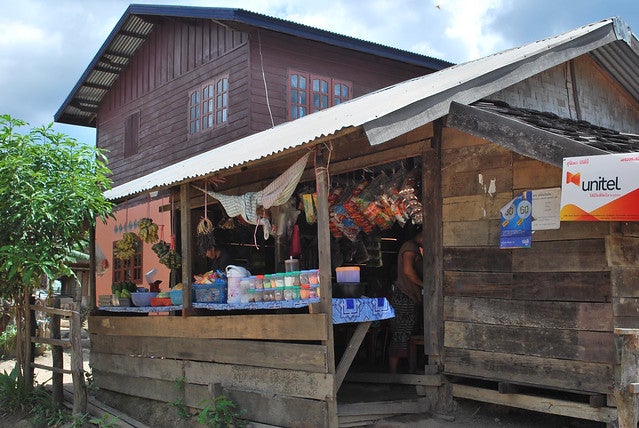 Lao PDR Storefront
Lao PDR Storefront
In developing economies many workers are employed in low-productive sectors with little protection. As the World Development Report 2019 notes, this can be as high as 90 percent in some emerging economies and has remained unchanged over decades. Lao PDR is no different with around 75.5 percent of the non-agricultural workforce informally employed (ILO). While much has been said about informal employment, very little is known about informal (unregistered) firms, mostly due to a lack of data.
We just got our hands on the latest informal firm survey for Lao PDR from the World Bank’s Enterprise Analysis unit. The data is representative of informal business in the non-agricultural sector for two cities - Vientiane and the city of Pakse. After digging through the data, we found five ways – some surprising, some not - in which formal and informal firms differ in these two cities.
1. Informal firms are far less productive than formal ones. Informal firms have 13% of the sales per worker of a formal firm. This is close to the 15 % estimate found in other studies (La Porta and Shleifer 2014).
2. Informal businesses are younger and less experienced. Informal firms are on average 7 years old - half the age of formal firms (14 years). Managers of informal firms also have about 7 years of experience, far less than managers in formal firms that have 16 years of experience.
3. Women overwhelmingly dominate the informal economy. 76% of informal businesses are female owned, compared to 21% in the formal economy of these two cities. While the magnitude of this difference is considerable, this is consistent with previous findings (WDR 2012) that show that the burden of care work as well as unequal treatment by markets and institutions lead women to the informal sector.
4. Lower incidence of crime for informal businesses. About 13% of registered firms were victims of crime, more than double than the rate for informal businesses of nearly 6%. Although surprising since informal businesses don’t enjoy the full protection under the law and are unlikely to invest in security measures, this may be specific to the region given similar findings in Myanmar.
5. Informal businesses are more twice as likely to face power outages, and four times more likely to experience water outages than formal firms. Electricity reliability has received far more attention than water outages (Islam and Hyland 2019) but water reliability may matter more for informal businesses. Only 2% of formal firms reported facing water shortages, while 10% of informal businesses did. Similarly, about 13% of registered businesses reported incidents of power outages in a typical month, while over a quarter of informal businesses reported the same. Some studies have shown that water shortages, rather than power outages, in the informal sector could lead to significant losses of sales (Islam 2019), hence the importance of the gap between the formal and informal sector.
These differences beg the question of why so many firms continue to operate in shadow markets. In these two cities, only 8% of firms indicated that they had considered registering with the Department of Enterprise Registration.
Nearly half of businesses indicated lack of benefits from registration as the main reason for remaining informal. Almost a third of the informal firms indicated time, fees and paperwork needed for registration as a hindrance. These results coincide with the Doing Business Report where Lao PDR ranks 154 out of 190 countries in the overall ranking.
As availability of data on informal businesses increases, a better understanding of the interaction and the differences between the formal and informal sectors can be developed. To access the data or to keep up to date with our work in the field, please visit www.enterprisesurveys.org.



Join the Conversation